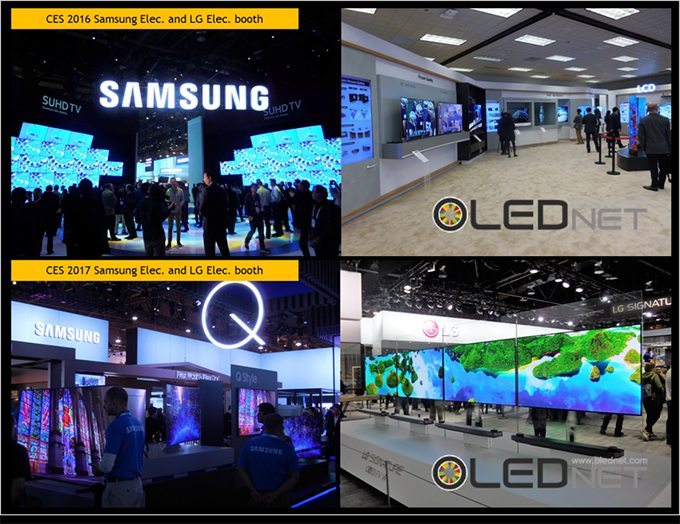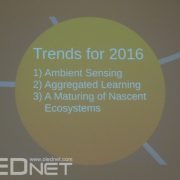Will Curved TV Disappear in the Premium TV Market?
The curved TV introduced firstly in 2013 has attracted attention for a long time, and many companies including Samsung Electronics and China’s Hisense, Haier and TCL showcased curved TVs at CES 2016. In addition, newcomers including Xiaomi and LeTV released curved TVs, and Samsung Electronics organized ‘Curved Federation’ with China’s TV companies such as Hisense and TCL in August, 2016 to cooperate with each other for the expansion of curved market, and the reviews on the curved TV market are generally positive.
But, only a few companies such as Korean and Chinese ones unveiled curved TVs at CES 2017, while other electronics companies in Europe and the US showcased flat TVs only. Meanwhile, LG Electronics said that it plan to release flat TVs only for Q9, a flagship TV model of 2017 but curved TVs for less expensive models Q7 and Q8. With its plan to focus on flat OLED TV in the future, pointing out the downward trend of curved TV market, LG plans to pay more attention to flat OLED TV. Likewise, major TV set companies’ awareness of curved TV started to change. Besides, European electronics company Vestel mentioned the disadvantage of curved TV that is too sensitive to viewing angle, and TV review company Reviewed.com and other review companies offered negative opinions on curved TV. This expects that the position of curved TVs is likely to dwindle in the premium TV market.
Accordingly, the premium TV market will have intense competition for the clear picture quality of flat type TVs, whereas curved TVs are expected to have competition with Chinese companies in a lower level TV market. As many Chinese TV makers have released curved TVs, curved TV in the premium TV market is no longer a competitive point. Therefore, TV set companies need to find a new turning point to catch the eyes of the consumers.

<Booth Photos of Samsung(Left) and LG(Right) at CES 2016 and 2017. Many curved TVs were mainly unveiled in 2016, but flat TVs in 2017>








